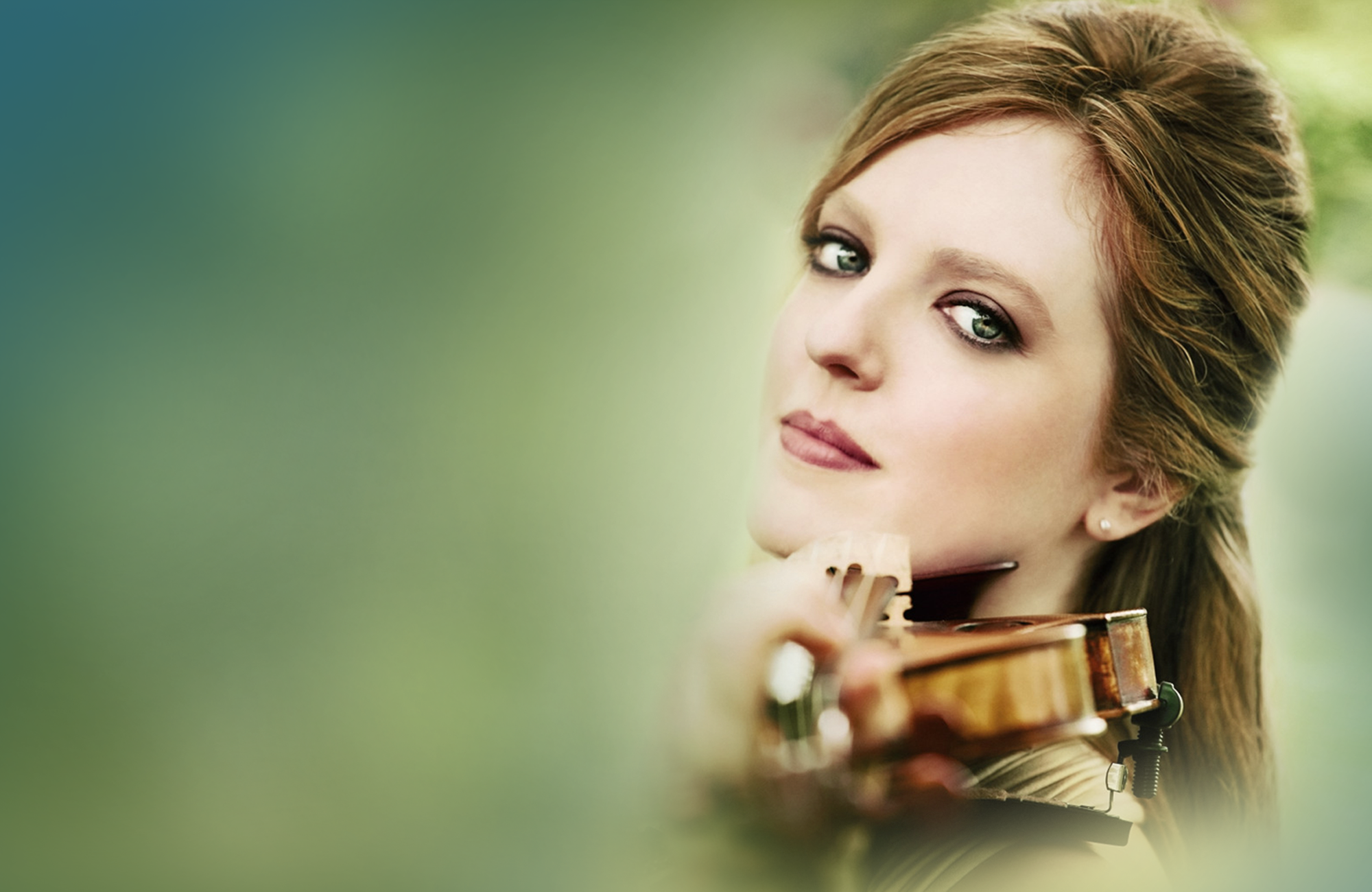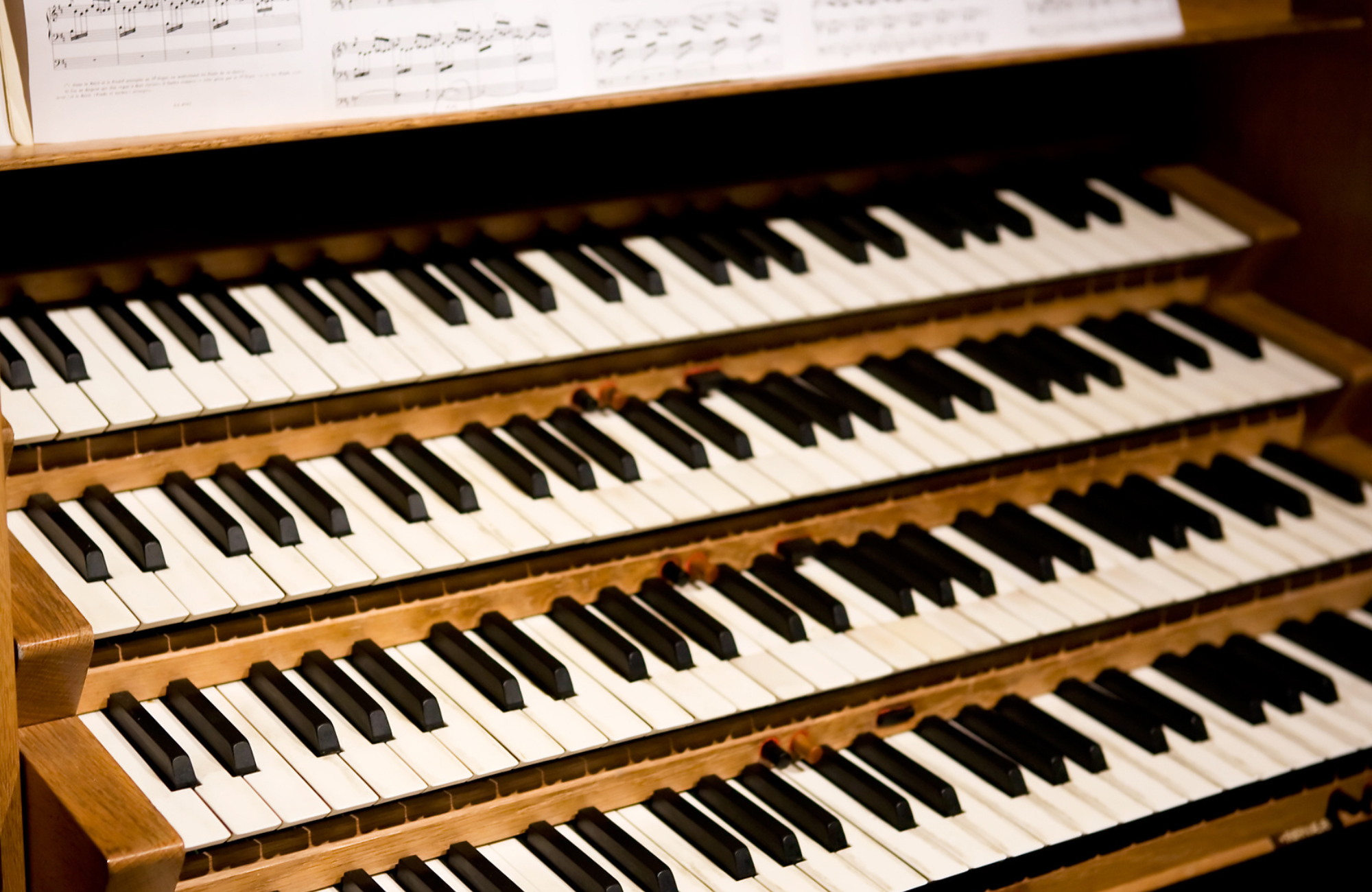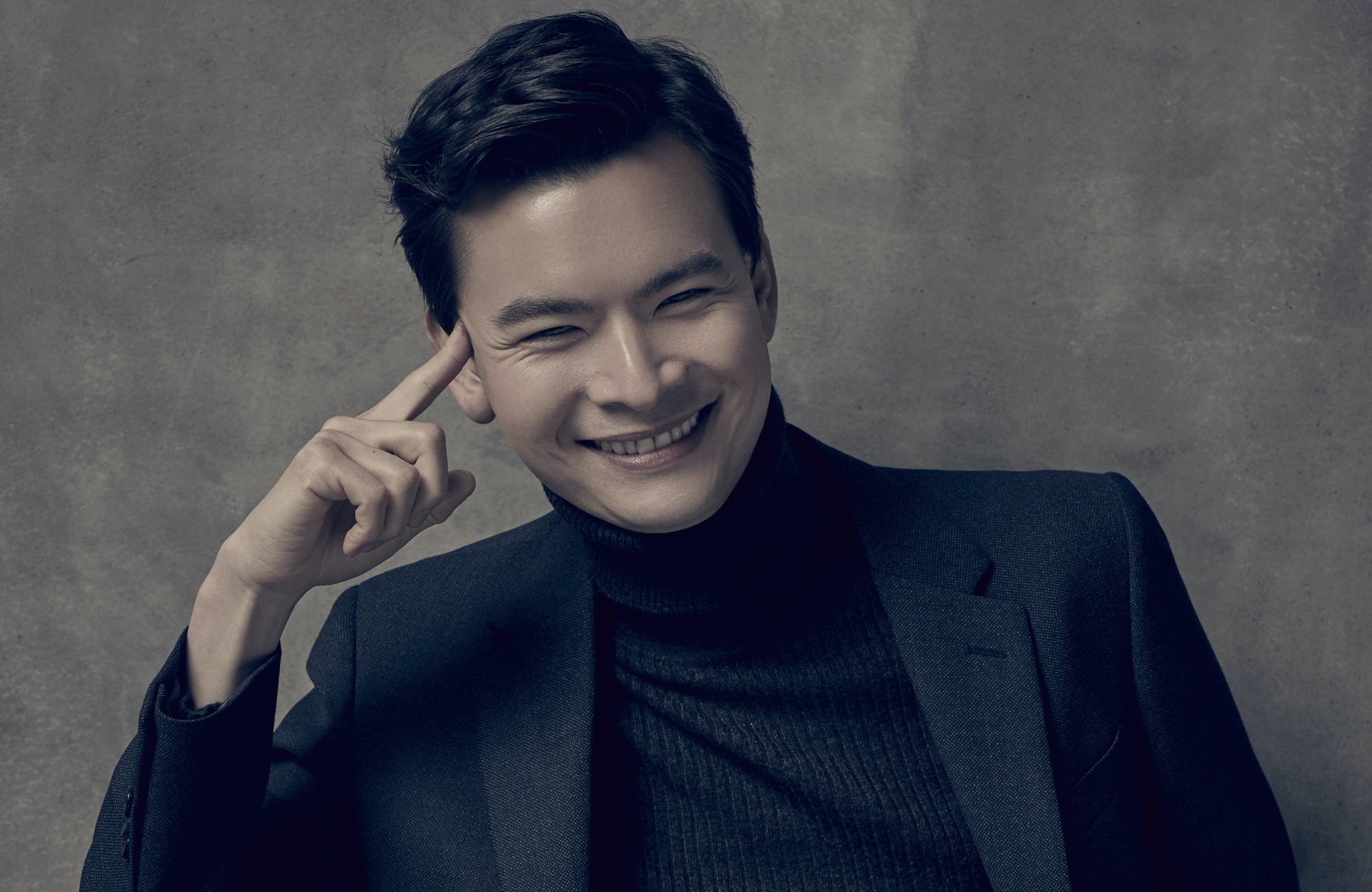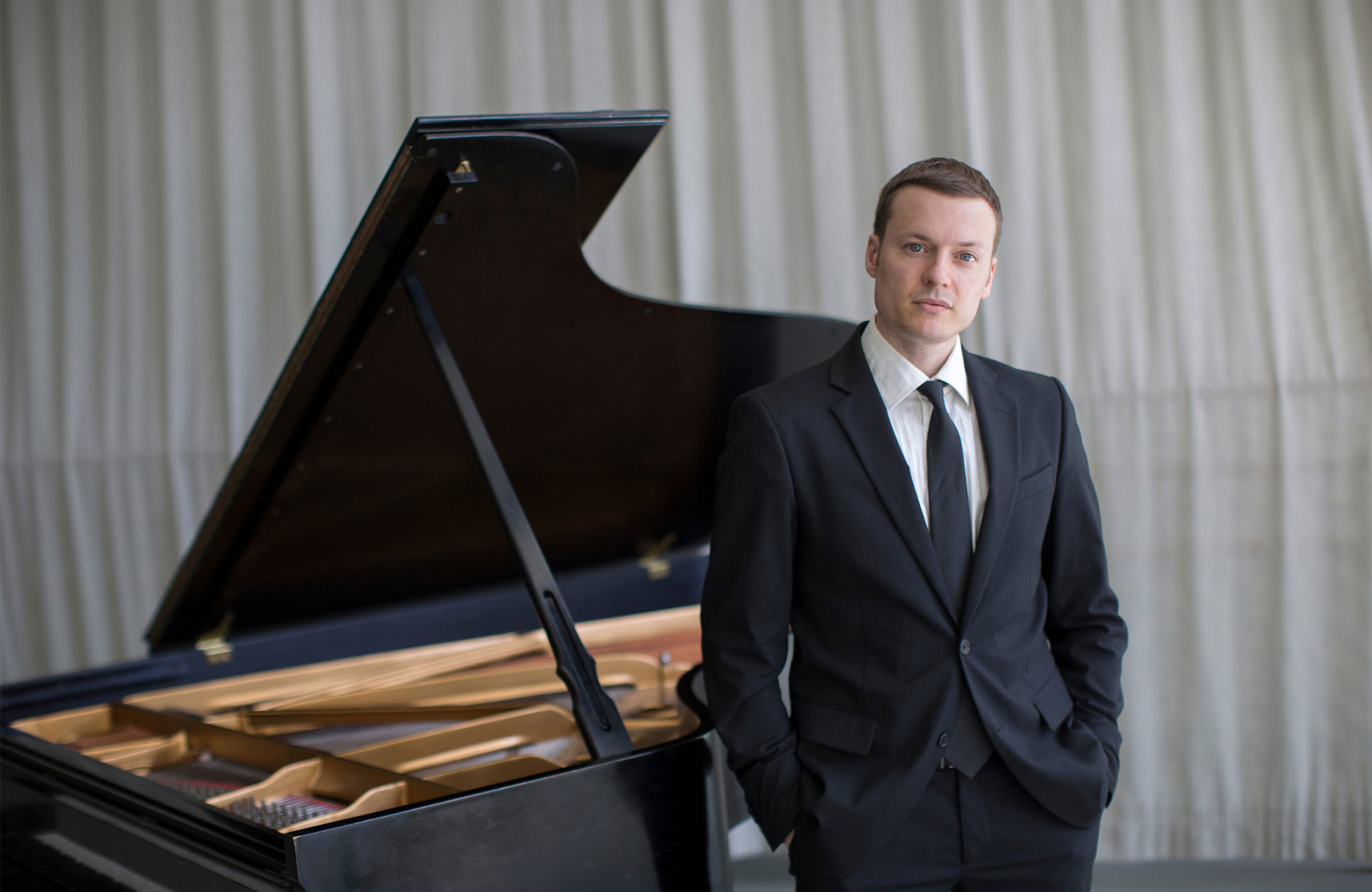Violinist Rachel Barton Pine leads the orchestra in the second half for Vivaldi’s Four Seasons. In a special appearance, Ms. Pine’s daughter Silvia Pine will also join to perform Vivaldi’s Double Violin Concerto in A minor. The show opens with Missy Mazzoli’s atmospheric Orbiting Spheres and Brahms’s Symphony No. 3, the only remaining Brahms symphony yet to be conducted by music director Lawrence Loh.
PROGRAM
MAZZOLI: Orbiting Spheres ![]()
BRAHMS: Symphony No.3 in F major, Op. 90 ![]()
VIVALDI: Four Seasons, Op. 8 No. 1-4 ![]()
VIVALDI: Concerto for 2 Violins in A minor, RV 522
Thanks to our sponsors for this performance!

Thank you to our media sponsor:

PROGRAM NOTES
At our last concert, we celebrated the Danube River. Tonight, it’s the Rhine that runs through the center of our program.
In 1850, Robert Schumann, inspired by his move to Dusseldorf (and, even more, by visiting the Cologne Cathedral), wrote his Third Symphony (“The Rhenish”) to celebrate the Rhine and its environs. Years later, his protégé Johannes Brahms (1833–1897) took a trip to a spa on the Rhine—and was inspired to compose his Symphony No. 3 in F (1883). At first, this might seem like little more than coincidence. But ...
At our last concert, we celebrated the Danube River. Tonight, it’s the Rhine that runs through the center of our program.
In 1850, Robert Schumann, inspired by his move to Dusseldorf (and, even more, by visiting the Cologne Cathedral), wrote his Third Symphony (“The Rhenish”) to celebrate the Rhine and its environs. Years later, his protégé Johannes Brahms (1833–1897) took a trip to a spa on the Rhine—and was inspired to compose his Symphony No. 3 in F (1883). At first, this might seem like little more than coincidence. But Brahms’s decision to interweave the two symphonies by lifting his first theme from “The Rhenish” points to a profound connection.
It’s actually no surprise that the two symphonies are linked. Brahms, after all, was still deeply entangled with the Schumann family. Robert had been Brahms’s mentor—and Brahms had long been in love with Robert’s composer-pianist wife Clara. True, Brahms’s relationship with Clara was apparently never consummated; but their attachment was passionate and profound, on both the personal and artistic levels. And even well after Robert died, he was a continuing presence in what remained a triangular relationship: Brahms and Clara devoted endless time to editing Robert’s music and making sure that it remained in the public eye.
It’s no surprise, either, that while both symphonies are arguably fueled by love for Clara, their tones are radically different. Robert’s Third is upbeat, bright, ebullient; Brahms’s is dark and anguished from the opening, which, as conductor Larry Loh puts it, “has a turbulence and rhythmic angst that carry all the way into the finale.” More than any of Brahms’s other symphonies, the Third gives a sense that we’re witnessing some deep autobiographical secrets.
The Third stands out from the other three Brahms symphonies in further ways, too. It’s the most compact of the four. And it’s the only one that ends quietly—without the despair of the Tchaikovsky Sixth, certainly, but without the heroic uplift that marks the other three. In fact, all the movements of the Third end quietly. Then, too, there’s far more thematic integration here than there is in its siblings, a stronger sense of a larger organic whole. But while, in the end, it is the least extroverted, it’s only in the third movement—which was taken up for songs by Frank Sinatra and Carlos Santana/Dave Matthews—that the music relaxes. And even here, despite what Larry calls its “predictable lilt,” the mood is slightly unsettled, with “the angst primarily in the harmonic and melodic leaning.”
The Four Seasons, a set of four three-movement violin concertos composed around 1715 by Antonio Vivaldi (1678–1741), is radically different. It’s outgoing where the Brahms is inward; it’s constantly bursting with new musical ideas where the Brahms concentrates on developing a limited store of material; it’s ornate and virtuosic where the Brahms is austere. Most important, though, the Vivaldi is a pre-eminent example of program music (instrumental music that tells a story or describes something visual), a musical technique that Brahms studiously avoided.
Thus, whatever the psychological insights of Brahms’s Rhine journey, it doesn’t reflect the natural beauties of the river. The Four Seasons, in contrast, is saturated with natural descriptions. Indeed, while it’s not the first piece of program music in the standard repertoire, it’s hard to think of anything in the canon that is more vividly graphic, from the chirping birds that open “Spring “and the barking dog in the next movement, on to the shivering winds of “Winter.” It’s so copious in its musical imitation that, for its first publication in 1725, Vivaldi added a sonnet to each concerto, guiding performers and listeners with a verbal report of the events that the music describes,
You can, of course, enjoy the music without knowing precisely what it represents. But tonight’s soloist Rachel Barton Pine (who will also be conducting this half of the concert), believes that “telling the audience the stories of the music right before they hear it—not in a pre-concert talk or in written program notes, but right there before each Season—increases their enjoyment of the listening experience, because then they can truly follow along to every detail. It’s just that much more fun. Even listeners who are super-familiar with the music don’t necessarily remember all of those details exactly.”
And what can we expect in terms of performance style? Rachel is perhaps best known as a champion of 19th and 20th-century music, both the most famous repertoire and less familiar works by composers from underrepresented groups, so we might expect an old-fashioned romantic reading. But she describes herself as a musical equivalent of a “foodie,” and her interests are vast, ranging from Medieval music to contemporary classical and heavy metal. And when it comes to Baroque music, her historical understanding is deep. “I’ve been playing baroque violin since I was 14. I think at the time, in the 90s, I was the only teenager in the US actually playing a baroque violin.”
That long association, however, does not lead to dogma or rigidity: she’s happy, for instance, to play The Four Seasons with a small group of players, one on a part, or with a full symphonic string section. Still, “The main thing for me is to bring it as close as possible to the historically informed aesthetic.” And why do that? “It’s not,” she says, “about being somehow authentic or historic for its own sake. That’s an empty argument. It’s about bringing the music most fully to life, which for me means getting as close to that aesthetic as possible.”
What does this involve in practice? Much of that has to do with the special sound quality of Baroque music. For instance, Baroque bows provide a “a whole different palette of colors and articulation. These days a lot of modern players own baroque bows, and I’ll be bringing a dozen of my own for other players to use if they wish—as well as wooden mutes which give a very different sound than the rubber and plastic mutes currently popular. I’m also going to have the violins across from each other on the stage, to accommodate these wonderful antiphonal moments.” In addition, there will be a theorbo (a long-necked member of the lute family) in the continuo section. Expect to hear Vivaldi with a kaleidoscopic range of timbres.
As a kind of an encore, we’ll be treated to Vivaldi’s Concerto in A Minor for Two Violins (c. 1711), in which Rachel will be joined by her 12-year-old daughter Sylvia Pine. Rachel points out, with a smile, that that this contributes yet a different aspect of “historical performance”—since (at least now), Sylvia is more or less the same age as the students at the Pio Ospedale della Pietà orphanage for whom Vivaldi wrote so much of his music.
If anything, our opener, Sinfonia (for Orbiting Spheres) by Missy Mazzoli (b. 1980), is even more kaleidoscopic than The Four Seasons—and even further from the hermetic style championed by the Brahms Third. Mahler is famous for his claim that “A symphony must be like the world; it must embrace everything.” And it’s clear that Mazzoli—an increasingly prolific composer who recently finished a stint as the Chicago Symphony’s Mead Composer-in-Residence—shares this eclectic spirit, even though her music sounds nothing like Mahler’s.
As I said when I reviewed the first recording of the piece: Even without knowing the title of her work, even without knowing that it’s intended (as the composer puts it) to be “music in the shape of a solar system,” even without knowing that in the course of its development “the ensemble [is transformed] into a makeshift hurdy-gurdy, flung recklessly into space,” you’d recognize that this is all-embracing music with an extensive reach.
While Sinfonia is not entirely calm, much of it is contemplative, as its interweaving ideas, swirling and echoing, move back and forth across vast distances. And like many of Mazzoli’s scores, it reveals an astonishing timbral imagination, as she calls on harmonicas, spring coil, boombox, synthesizer, and lion’s roar (a drumhead or similar surface—you can make one with a washtub—which vibrates when a cord is pulled through it). It’s a perfect introduction to this varied concert—as well as an appetizer for our next Masterworks Concert, February 17, which will feature another musical response to our solar system, Holst’s The Planets.
Peter J. Rabinowitz
Have any comments or questions? Please write to me at prabinowitz@ExperienceSymphoria.org
FEATURED ARTISTS
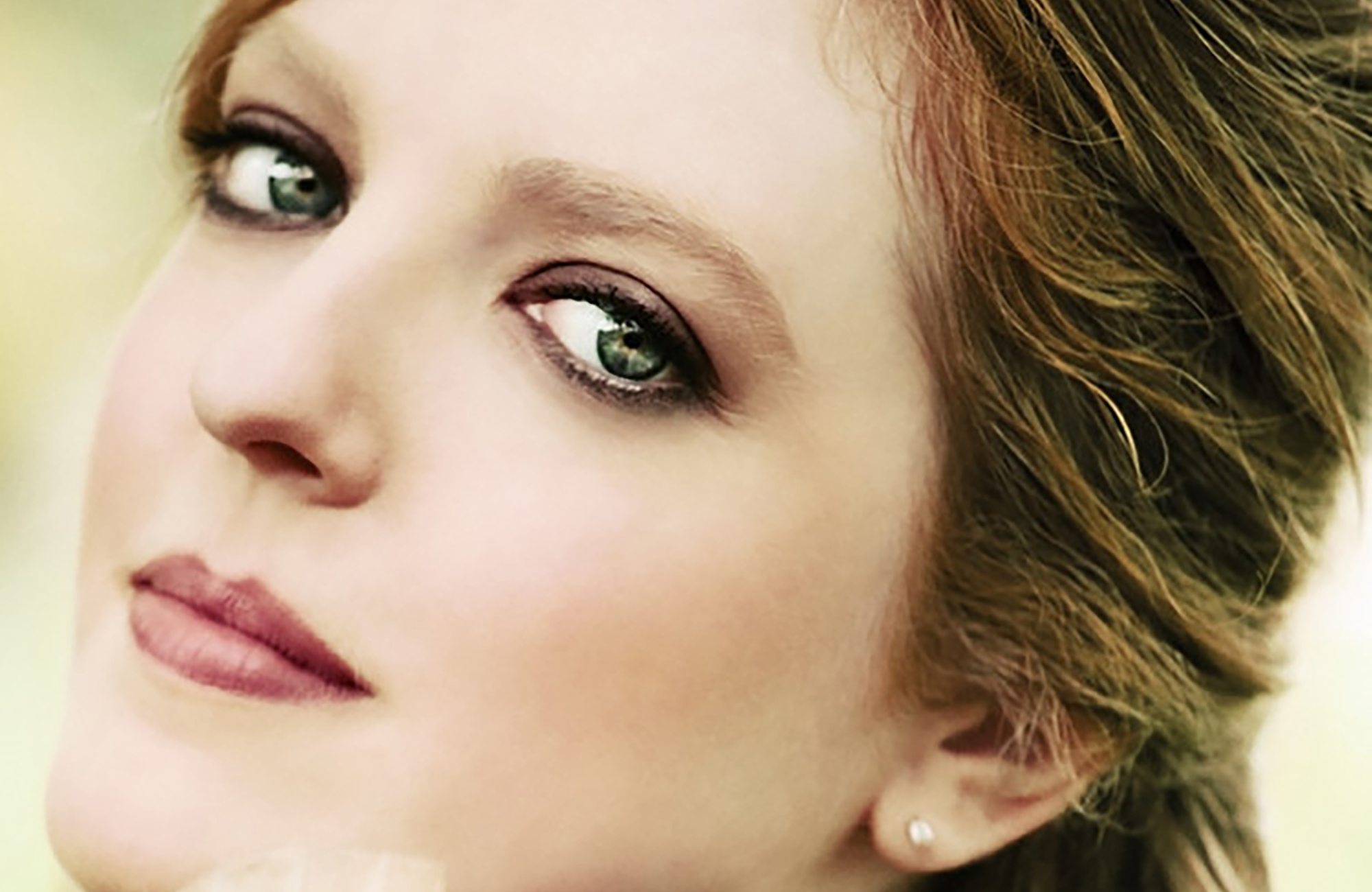
Heralded as a leading interpreter of the great classical masterworks, American concert violinist Rachel Barton Pine thrills international audiences with her dazzling technique, lustrous tone, and emotional honesty. With an infectious joy in music-making and a passion for connecting historical research to performance, Pine transforms audiences’ experiences of classical ...
Heralded as a leading interpreter of the great classical masterworks, American concert violinist Rachel Barton Pine thrills international audiences with her dazzling technique, lustrous tone, and emotional honesty. With an infectious joy in music-making and a passion for connecting historical research to performance, Pine transforms audiences’ experiences of classical music.
Pine performs with the world’s leading orchestras including the Philadelphia Orchestra, the Royal Philharmonic Orchestra, Camerata Salzburg, and the Chicago, Vienna, and Detroit Symphony Orchestras. She has workedwith renowned conductors, including Teddy Abrams, Marin Alsop, Daniel Barenboim, Semyon Bychkov, Neeme Järvi, Christoph Eschenbach, Erich Leinsdorf, Nicholas McGegan, Zubin Mehta, Tito Muñoz, and John Nelson, and has performed chamber music with Jonathan Gilad, Clive Greensmith, Paul Neubauer, Jory Vinikour, William Warfield, Orion Weiss, and the Pacifica and Parker Quartets.
This summer and 2023/24 season, Pine joins the Los Angeles Philharmonic and Stéphane Denève at the Hollywood Bowl for a performance of Billy Childs’ Violin Concerto No. 2 written specially for Pine, in addition to performing with the Royal Scottish National Orchestra, Phoenix Symphony, Mercury Chamber Orchestra, Toledo Symphony, National Symphony of Uruguay, and Minas Gerais Philharmonic, among others. Recital appearances include at the Kennedy Center, Ravinia, and the Festival Internacional de Música de Guadalajara. Early Music appearances include a performance with Symphoria and her daughter, Sylvia Pine, in New York; San Francisco Early Music Society with harpsichordist Jory Vinikour; and in Virginia with her Trio Settecento.
In August 2023, Cedille Records released Dependent Arising, an album that reveals surprising confluences between classical and heavy metal music by pairing Shostakovich’s Violin Concerto No. 1 with Earl Maneein’s Dependent Arising–Concerto for Violin and Orchestra, written for Pine and performed with the Royal Scottish National Orchestra under the baton of Tito Muñoz. In September 2022, Cedille released Violin Concertos by Black Composers Through the Centuries: 25th anniversary edition which features Pine’s new recording of Price: Violin Concerto No. 2 with the Royal Scottish National Orchestra and Jonathon Heyward, and reprisals of her 1997 recordings of masterworks by Joseph Bologne, Chevalier de Saint-Georges (1775), José White Lafitte (1864), and Samuel Coleridge-Taylor (1899). And in March 2023, Pine’s performance of Malek Jandali: Violin Concerto No. 2, recorded with the Vienna Symphony Orchestra and Marin Alsop, was released on an album of Jandali concertos.
Pine’s other discography of over 40 recordings includes Dvořák and Khachaturian Violin Concertos(Teddy Abrams and the Royal Scottish National Orchestra); Brahms and Joachim Violin Concertos (Carlos Kalmar and the Chicago Symphony Orchestra), and Elgar and Bruch Violin Concertos(Andrew Litton and the BBC Symphony Orchestra). Pine and Sir Neville Marriner’s Mozart: Complete Violin Concertoswith the Academy of St Martin in the Fields and her Bel Canto Paganini both charted at number three on the classical charts. Pine’s Testament: Complete SonatasandPartitas for Solo Violin by Johann Sebastian Bach and Violin Lullabiesdebuted at number one. Her recent Blues Dialoguesis an album of blues-influenced classical works by 20th-and 21st-century Black composers.
Pine frequently performs music by contemporary composers, including major works written for her by Billy Childs, Mohammed Fairouz, Marcus Goddard, Earl Maneein, Shawn E. Okpebholo, Daniel Bernard Roumain, José Serebrier, and Augusta Read Thomas. In addition to her career as a soloist, she is an avid performer of baroque, renaissance, and medieval music on baroque violin, viola d’amore, renaissance violin, and rebec.
In addition to her regularly scheduled performances, Pine has subbed in for her fellow soloists for a number of incredible concerts. Most notably, in 2021, with just 3 1/2 hours’ notice, Pine performed Prokofiev’s Violin Concerto No. 1 at Ravinia with the Chicago Symphony Orchestra and MarinAlsop in place of Midori.
She has appeared on The Today Show, CBS Sunday Morning, PBS NewsHour, Prairie Home Companion, NPR’s Tiny Desk, NPR’s All Things Considered, and Performance Today, and in The Wall Street Journaland The New York Times. She holds prizes from several of the world’s leading competitions, including a gold medal at the 1992 J.S. Bach International Violin Competition.
She writes her own cadenzas and performs many of her own arrangements. With the publication of The Rachel Barton Pine Collection, she became the only living artist and first woman in Carl Fischer’s Masters Collection series. During the pandemic, she performed the entire solo violin part of 24 different violin concertos, live and unaccompanied, for her weekly series “24 in 24: Concertos from the Inside.”
An active philanthropist, Pine has led the Rachel Barton Pine (RBP) Foundation for over two decades. Early in her career, she noticed that young people learning classical music seldom have the opportunity to study and perform music written by Black composers. Since 2001, Pine and her RBP Foundation’s Music by Black Composers (MBC) project have collected more than 900 works by 450+ Black composers from the 18th–21stcenturies. MBC curates free repertoire directories on its website and publishes print resources, including pedagogical books of music exclusively by global Black classical composers and the Rachel Barton Pine Foundation Coloring Book of Black Composers. Additionally, the RBP Foundation assists young artists through its Instrument Loan Program and Grants for Education and Career. Pine has also served on the board of many not-for-profits including the Sphinx Organization.
She performs on the “ex-Bazzini, ex-Soldat” Joseph Guarnerius “del Gesù” (Cremona 1742), on lifetime loan from her anonymous patron.
www.rachelbartonpine.com
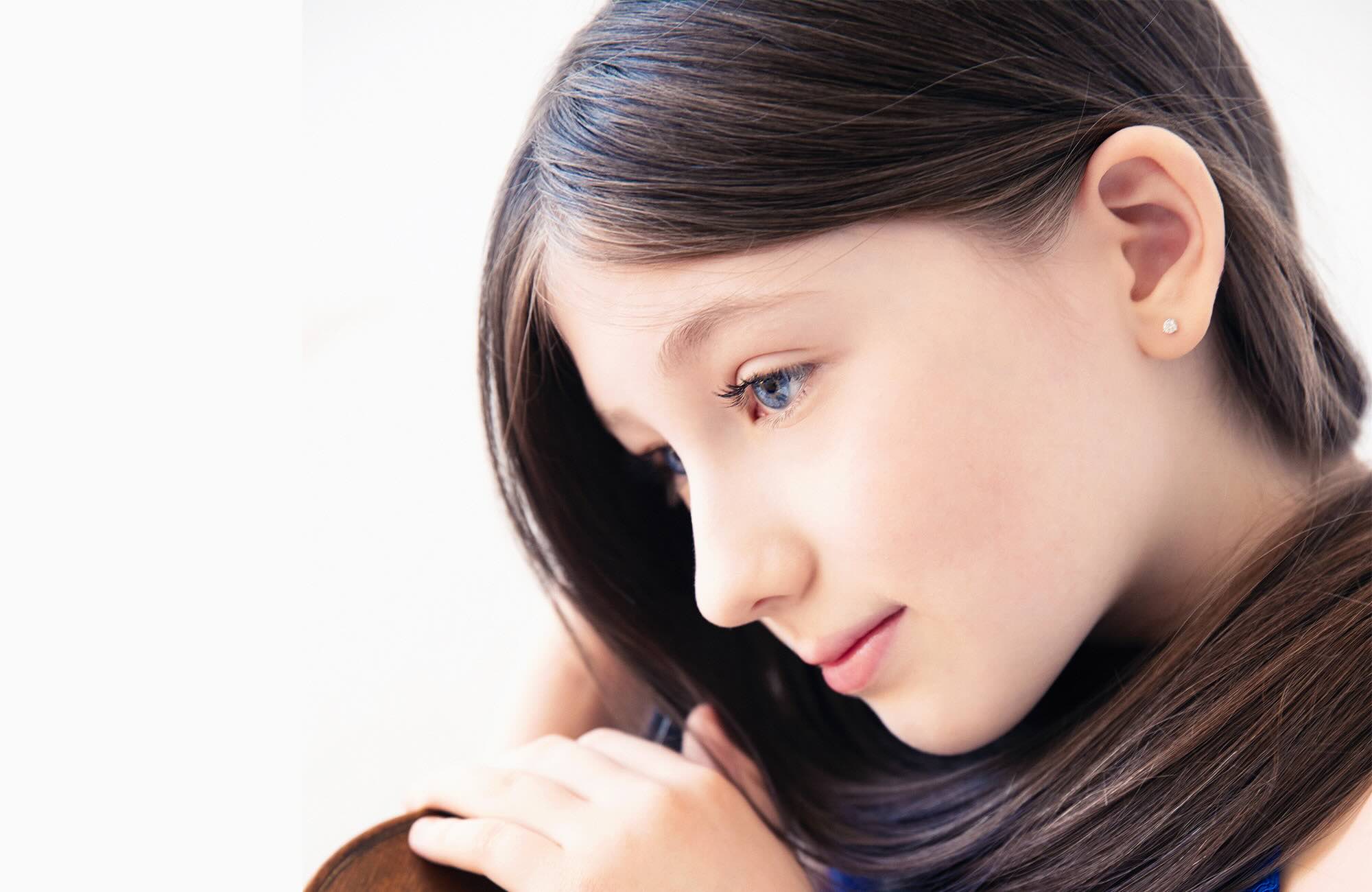
Described as “adorable and formidable” by the Illinois Times, 12-year-old Sylvia Pine has won First Prize in more than 40 international competitions as a composer, violinist, and singer. In 2022, she toured as violin soloist with the Tel Aviv Soloists and in January 2024, she will appear with Symphoria in Syracuse. Since ...
Described as “adorable and formidable” by the Illinois Times, 12-year-old Sylvia Pine has won First Prize in more than 40 international competitions as a composer, violinist, and singer. In 2022, she toured as violin soloist with the Tel Aviv Soloists and in January 2024, she will appear with Symphoria in Syracuse. Since making her radio debut in 2018 on the nationally syndicated show Performance Today, she has given solo performances in Carnegie Hall (New York), Musikverein (Vienna), and the Royal Albert Hall (London).
Last season, Sylvia’s string orchestra work “Rising Storm” was performed by six youth orchestras across the U.S. She has participated in the young composer projects of the Tucson Symphony and Chicago Youth Symphony, and she is currently the youngest member of the Chicago Symphony Orchestra’s Young Composers Initiative. She leads weekly Improv Club gatherings for her peers, and her frequent Instagram videos encourage other music students to add improvisation to their daily practicing.
An Artists of Tomorrow Merit Scholar at the Music Institute of Chicago, Sylvia will celebrate her 2,500th consecutive day of practicing on December 28. She has attended numerous chamber music camps including Credo, Heifetz, and Point CounterPoint. She also studies piano, baroque and renaissance violin, medieval rebec, American old-time fiddling, Scottish fiddling, and electric rock violin.
Sylvia is a lifelong home schooler. In addition to music, she enjoys reading, writing stories, playing in the woods, drawing, and learning about different species of mythical creatures. She is vegan and loves all animals, and she is particularly passionate about raising money and awareness for the pangolin, the most trafficked mammal on earth. sylviapine.com

Described as bringing an “artisan storyteller’s sensitivity… shaping passages with clarity and power via beautifully sculpted dynamics… revealing orchestral character not seen or heard before” (Arts Knoxville) Lawrence Loh enjoys a dynamic career as a conductor of orchestras all over the world.
After an extensive two ...
Described as bringing an “artisan storyteller’s sensitivity… shaping passages with clarity and power via beautifully sculpted dynamics… revealing orchestral character not seen or heard before” (Arts Knoxville) Lawrence Loh enjoys a dynamic career as a conductor of orchestras all over the world.
After an extensive two year search, Lawrence Loh was recently named Music Director of the Waco Symphony Orchestra beginning in the Spring of 2024. Since 2015, he has served as Music Director of The Syracuse Orchestra (formerly called Symphoria), the successor to the Syracuse Symphony Orchestra. “The connection between the organization and its audience is one of the qualities that’s come to define Syracuse’s symphony as it wraps up its 10th season, a milestone that might have seemed impossible at the beginning,” (Syracuse.com) The Syracuse Orchestra and Lawrence Loh show that it is possible to create a “new, more sustainable artistic institution from the ground up.”
Appointed Assistant Conductor of the Pittsburgh Symphony in 2005, Mr Loh was quickly promoted to Associate and Resident Conductor within the first three years of working with the PSO. Always a favorite among Pittsburgh audiences, Loh returns frequently to his adopted city to conduct the PSO in a variety of concerts. Mr. Loh previously served as Music Director of the West Virginia Symphony Orchestra, Music Director of the Northeastern Pennsylvania Philharmonic, Artistic Director and Principal Conductor of the Syracuse Opera, Music Director of the Pittsburgh Youth Symphony Orchestra, Associate Conductor of the Dallas Symphony Orchestra, Associate Conductor of the Colorado Symphony Orchestra and Music Director of the Denver Young Artists Orchestra.
Mr. Loh’s recent guest conducting engagements include the San Francisco Symphony, Dallas Symphony, North Carolina Symphony, Baltimore Symphony, Sarasota Orchestra, Florida Orchestra, Pensacola Symphony, Atlanta Symphony, National Symphony, Detroit Symphony, San Diego Symphony, Seattle Symphony, National Symphony (D.C.), Utah Symphony, Rochester Philharmonic, Indianapolis Symphony, Calgary Philharmonic, Buffalo Philharmonic, Albany Symphony and the Cathedral Choral Society at the Washington National Cathedral. His summer appearances include the festivals of Grant Park, Boston University Tanglewood Institute, Tanglewood with the Boston Pops, Chautauqua, Sun Valley, Shippensburg, Bravo Vail Valley, the Kinhaven Music School and the Performing Arts Institute (PA).
As a self-described “Star Wars geek” and film music enthusiast, Loh has conducted numerous sold-out John Williams and film music tribute concerts. Part of his appeal is his ability to serve as both host and conductor. “It is his enthusiasm for Williams’ music and the films for which it was written that is Loh’s great strength in this program. A fan’s enthusiasm drives his performances in broad strokes and details and fills his speaking to the audience with irresistible appeal. He used no cue cards. One felt he could speak at filibuster length on Williams’ music.” (Pittsburgh Tribune)
Mr Loh has assisted John Williams on multiple occasions and has worked with a wide range of pops artists from Chris Botti and Ann Hampton Callaway to Jason Alexander and Idina Menzel. As one of the most requested conductors for conducting Films in Concert, Loh has led Black Panther, Star Wars (Episodes 4-6), Jaws, Nightmare Before Christmas, Jurassic Park, Casablanca, The Wizard of Oz and Singin’ in the Rain, among other film productions.
Lawrence Loh received his Artist Diploma in Orchestral Conducting from Yale, his Masters in Choral Conducting from Indiana University and his Bachelor of Arts from the University of Rochester. Lawrence Loh was born in southern California of Korean parentage and raised in Carlisle, Pennsylvania. He and his wife Jennifer have a son, Charlie, and a daughter, Hilary. Follow him on instagram @conductorlarryloh or Facebook at @lawrencelohconductor or visit his website, www.lawrenceloh.com


